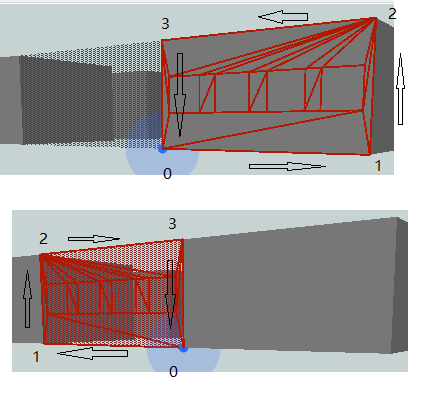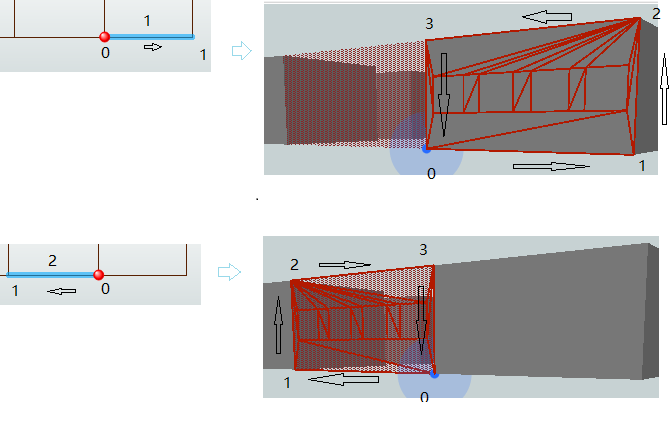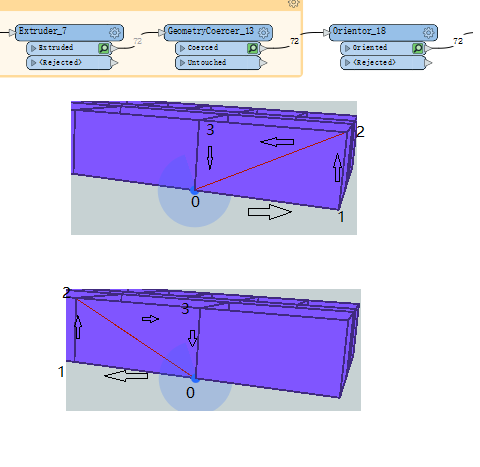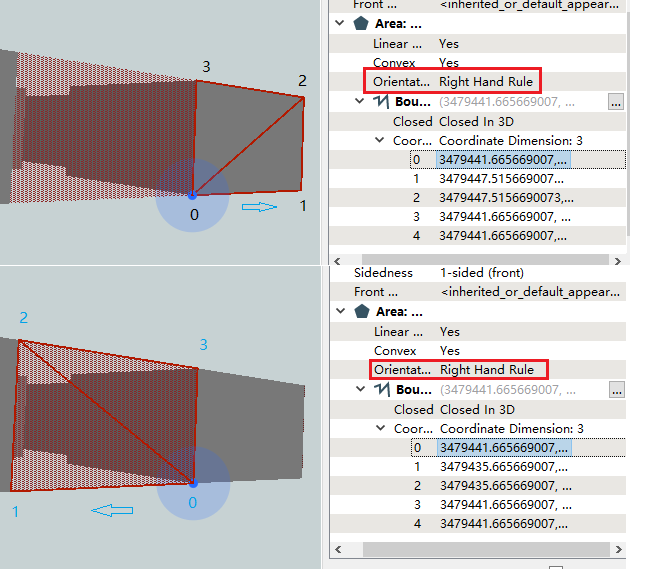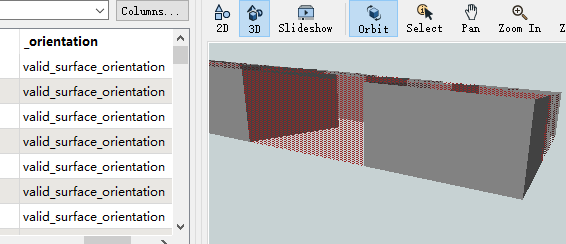Hi,
I use Extruder to extrude several lines to surface (Parameters: Direction: Vertical). But after extruding, the vertices of each surface point to different orders, some of which are clockwise (the bottom figure) and some of which are counterclockwise (the above figure). If I want to unify the directions of vertices as counterclockwise, how to set?Can anyone help me?
